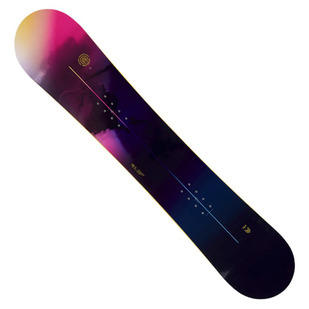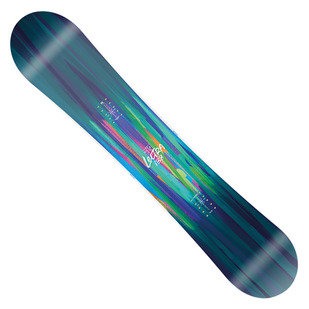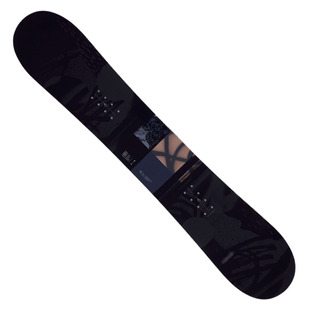Fresh snow, blue skies and legs that are itching to hit the slopes? This year, why not enjoy the joys of winter while snowboarding! It's a winter sport that offers unique sliding sensations and for those who want a little more adrenaline, combines speed and acrobatics. To ensure the best conditions, it's important to choose your snowboard carefully, depending on the type of riding you're going to do. Here's how to shop for your new snowboard.
There are four main criteria for choosing a snowboard:
First of all, it's important to remember the terms used to properly describe a snowboard.
Snowboard anatomy:
1. Type of riding
The big question before you buy is, what type of rider are you really?
For example, if you're a beginner, most of the boards will let you explore every aspect of the sport.
On the other hand, if you're more advanced, then you'll be able to make a more precise choice. Do you want to ride on groomed slopes only or on all types of terrain (slopeside, undergrowth, moguls)? Are you planning on visiting snow parks with modules or are you looking for powder snow? Your answers will help orient you on the style of board best suited to your needs.
Here are our four main categories of snowboards
Freestyle Board
When you're out on the slopes, do you strive for jumps, rotations and having fun in the snow parks? Look for a board designed specifically for freestyle. It's generally flexible, easy to handle and can be used both forwards and backwards, as the bindings are positioned symmetrically in relation to the centre of the board (also known as a twintip). Ideal for acrobatic tricks.
Psst: A little well-kept secret, it's very useful for parents who want to teach their young children to do the pendulum.
Powder Board (Freeride)
Fan of speed, deep powder and big vertical drops? Then look for a freeride model that will give you stability while turning, buoyancy on fresh snow and grip on backcountry trails or ungroomed slopes. Generally speaking, the front tip is wider and also longer in order to direct the rider's weight backwards and navigate more fluidly on fresh snow. Usually, the rear tip is slightly narrower (a few millimetres) and the reference position is shifted backwards a little. This is to increase the board's floatability on fresh snow and its stability at medium and high speeds.
All-mountain Board
If you're a fan of both groomed slopes and backcountry trails, then opt for an all-mountain board. It's actually a hybrid between a freeride and freestyle board, making it the most versatile model. It will allow you to ride just about any type of snow without offering overly specialized performance. It's up to you to adapt the back of the bindings to suit your riding style.
Splitboard
You would love to explore new winter sports grounds? Look no further, alpine touring is for you. All you need is a split board that will allow you to climb the trail or slope on two skis (split board) fitted with climbing skins. Once to the top, simply remove the skins, reassemble the two pieces and install your bindings for a memorable descent. Split boards are designed with metal edges on the outside to bite into the snow on the way up.






















